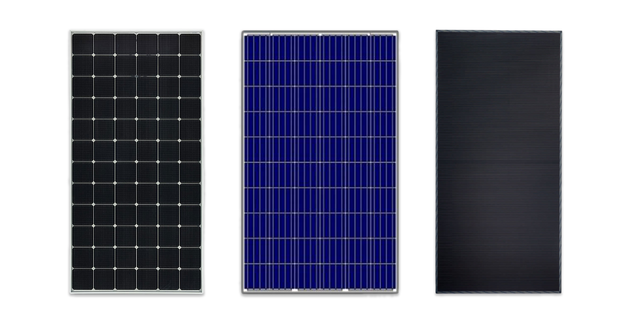The Definitive Guide to Solar Systems
Wiki Article
The smart Trick of Solar Systems That Nobody is Discussing
Table of ContentsThe Ultimate Guide To Solar SystemsTop Guidelines Of Solar SystemsRumored Buzz on Solar SystemsThe Ultimate Guide To Solar Systems
There are three various kinds of solar panels: monocrystalline, polycrystalline, and slim film. Monocrystalline solar panels are very reliable as well as have a sleek layout, however come at a higher cost point than various other solar panels. Polycrystalline photovoltaic panels are less costly than monocrystalline panels, nonetheless, they are much less efficient and also aren't as cosmetically pleasing.Nowadays, there are several varieties of monocrystalline solar panels on the market to pick from. Passivated Emitter and also Back Contact cells, more frequently referred to as PERC cells, are ending up being a progressively preferred monocrystalline option. PERC cells undergo a various manufacturing as well as assembly process that increases the amount of power the cells can generate.
Due to the fact that monocrystalline solar batteries are constructed from a single crystal of silicon, electrons have the ability to quickly flow throughout the cell, increasing overall effectiveness. Not just do monocrystalline panels have the highest efficiency ratings, they generally additionally have the highest possible power capability ratings. Most monocrystalline panels on the market today will have a power output ranking of a minimum of 320 watts, but can go up to around 375 watts or greater!.
Since polycrystalline cells include multiple silicon cells, the electrons can not relocate as quickly and also because of this, decrease the efficiency of the panel. The reduced performance of polycrystalline panels additionally implies they tend to have a reduced power result than monocrystalline panels, generally ranging in between 240 watts as well as 300 watts.
8 Simple Techniques For Solar Systems
4% efficiency With thin film cell models. In order to meet your energy needs, you would certainly require to install more thin film panels over a big location to produce the exact same quantity of electrical energy as crystalline silicon photovoltaic panels. This is why slim film solar panels don't truly make feeling for domestic installations where space is limited.The temperature level coefficient tells you how much the power outcome will decrease by for every 1 * C over 25 * C the panel gets. The conventional temperature coefficient for mono and also polycrystalline panels typically falls someplace in between -0.
Actually, with some slim movie panels, it's difficult to also see the private cells within the panel. They additionally often tend to have less electrical wiring and busbars, suggesting there's less white space. Since they are so ineffective, you would certainly require to cover your entire roofing system in slim film panels - which may or might not be your style.

Some suppliers have worked around this with black packaging or forming the cells in a different way, however these aesthetic modifications can influence both the price and performance of the panels. Overall, monocrystalline panels still look sleek, however they're a over at this website bit much more noticable than slim movie panels. solar systems. The process in which polycrystalline solar cells are produced creates the cells to have a blue, marbled look.
9 Simple Techniques For Solar Systems
If you get on a limited budget plan, polycrystalline panels could make more sense for you. We do not advise thin film photovoltaic panels for residential installments - their efficiency and resilience do not make the affordable worth it, and it's unlikely you'll have nearly adequate space to set up the number of slim movie panels you would require to cover your home electrical energy usage.Since they are made from pure silicon, they can be conveniently determined by their dark black shade. Making use of pure silicon also makes monocrystalline panels one of the most space-efficient as well as longest-lasting amongst all three photovoltaic panel types. However, this comes with an expense a great deal of silicon is lost to generate one monocrystalline cell, occasionally reaching over 50%.

Amorphous silicon panels (A-Si) derive their name from their unformed nature. Unlike mono-and polycrystalline solar cells, the silicon is not structured on the molecular degree. Typically, an a-Si cell requires only a portion of the silicon required to produce regular silicon cells. This allows them to have the most affordable manufacturing expense, at the expenditure of efficiency.
The 9-Second Trick For Solar Systems
50 $0. 50 $0. 50 Note that link these figures do not consist of the expense of installation and labor.
This implies that thin-film panels can be an excellent option for hotter atmospheres or locations that experience even more sunlight throughout the year. The upgraded International Building regulations of 2012 requires photovoltaic panels to match the fire rating of the roof where they are installed. This is to make sure that the components do not increase the spread of flames in case of a fire.
Report this wiki page